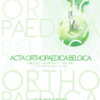Non-contact wound area assessment by digital planimetry using photo editing software
Non-contact; wound; area; assessment; digital planimetry; photoshop; transparency
Published online: Aug 23 2022
Abstract
To objectively assess wound healing utilizing a novel digital photo planimetry method. 58 wounds mostly of traumatic origin were studied. In method I (control or gold standard), a transparent plastic graph paper sheet with 2.5 mm squares was placed on the wound to trace the wound edges. This was scanned and analyzed in Adobe Photoshop (PS6) to estimate the area. In the novel method (method II), we clicked a photo with one-inch lines marked (on either side of the wound). This photo was similarly assessed in PS6. A two-sample t-test was used for analysis. Photos were clicked every third day. The time taken to calculate the resultant area was also noted. 484 photos and 1936 values were analyzed. The mean areas obtained were 10690 mm 2 and 10859 mm 2 respectively by methods I and II. The mean difference was 0.824%, 95% CI [-0.05, 1.60] and p = 0.923. The inter and intra- observer variation was < 2% for all readings. The time taken by the novel method was much lesser than the time-tested method (mean = 82 sec vs 178 sec; p < 0.01). The difference in area by the two methods is not statistically significant. The accuracy of both methods is therefore comparable. Our novel method is easier, more cost-effective, equally accurate, safer and repro- ducible in comparison with the transparency squares method, especially for flat or 2-dimensional wounds.
